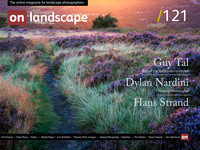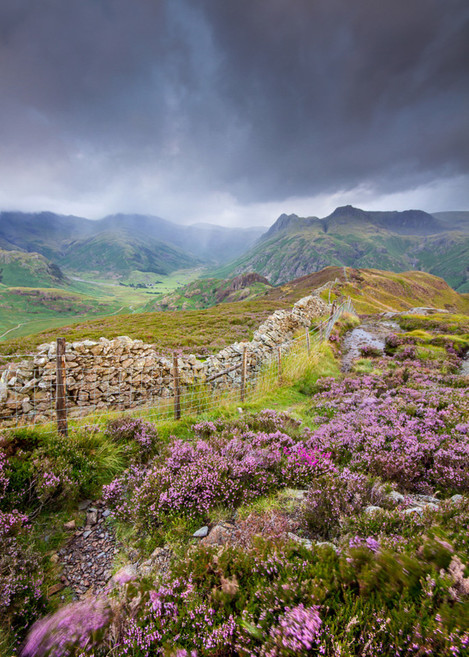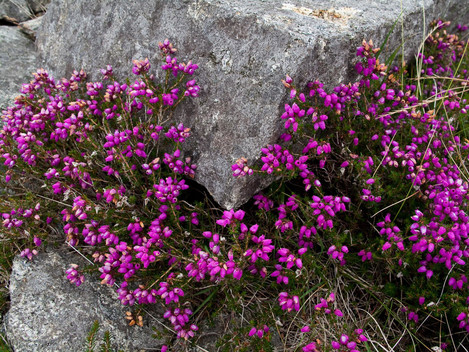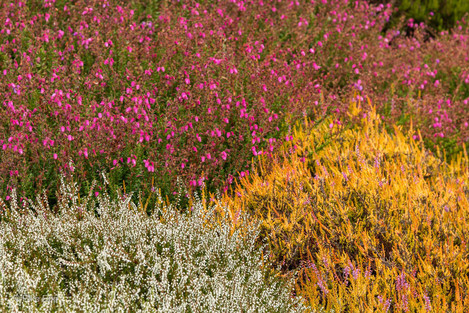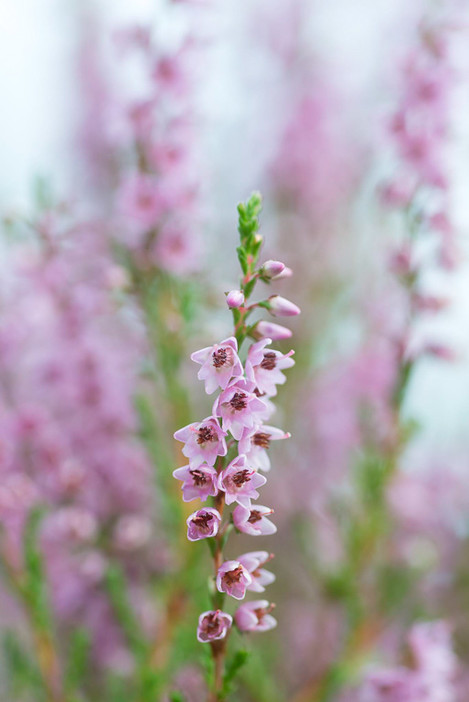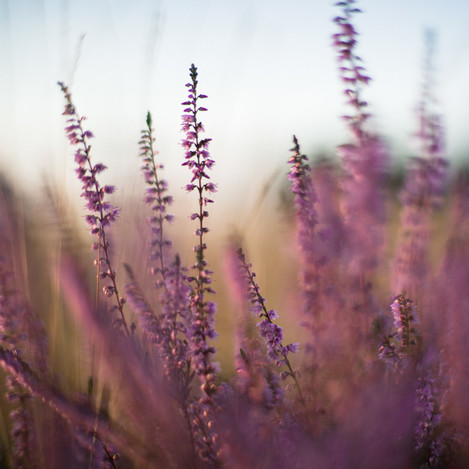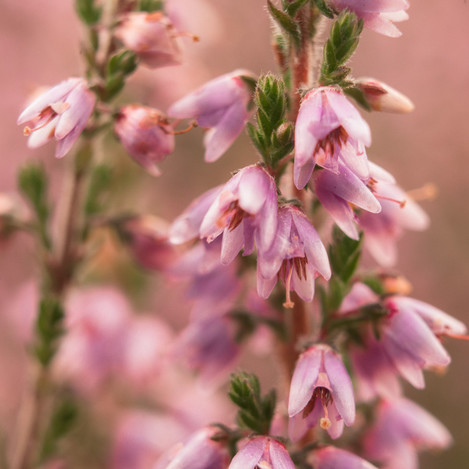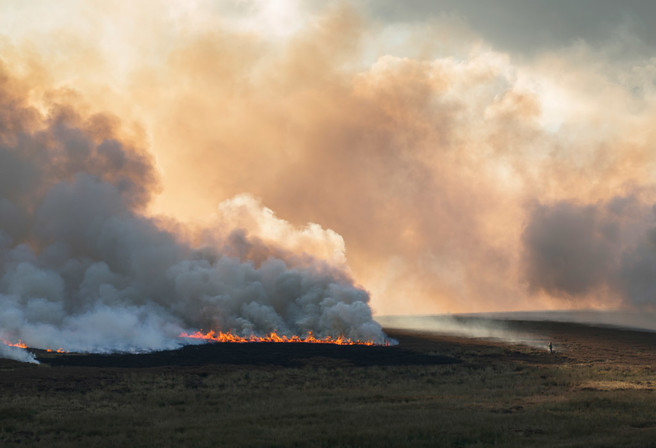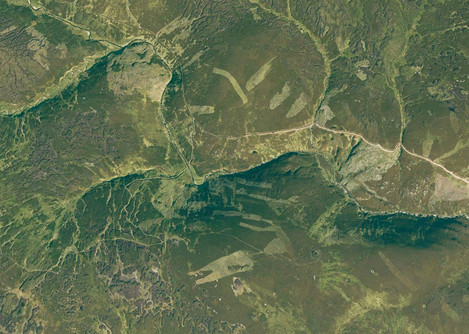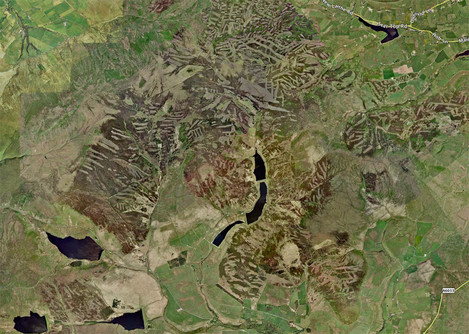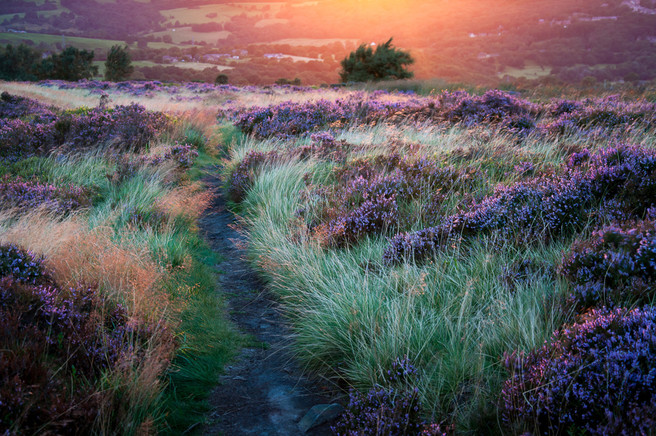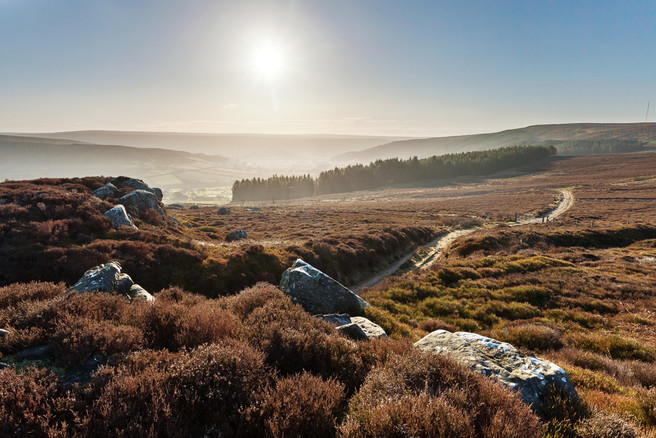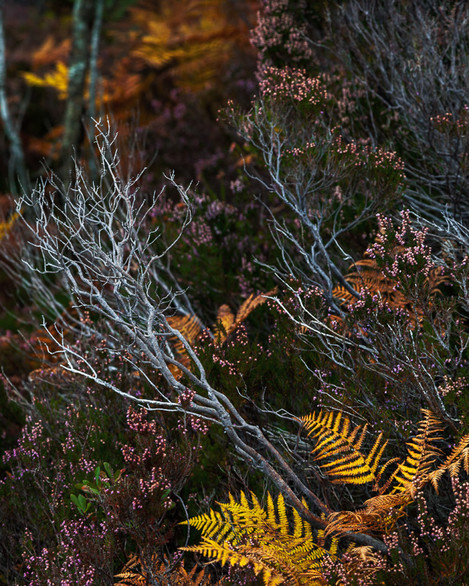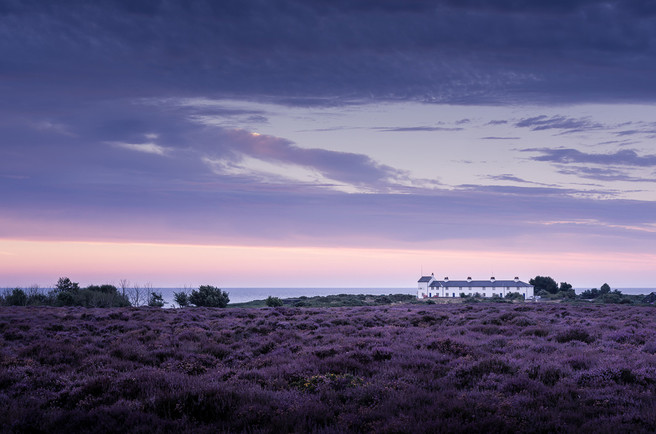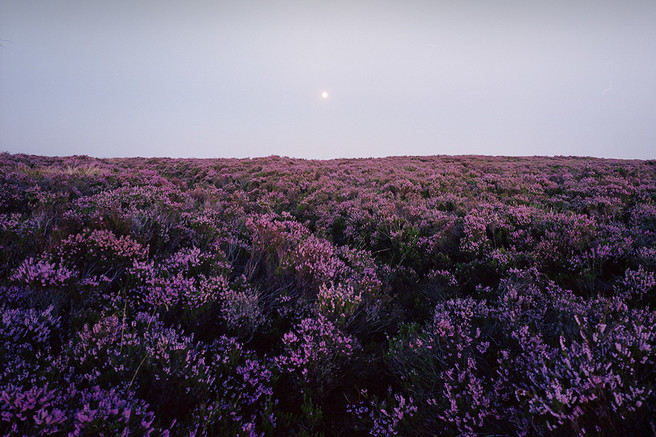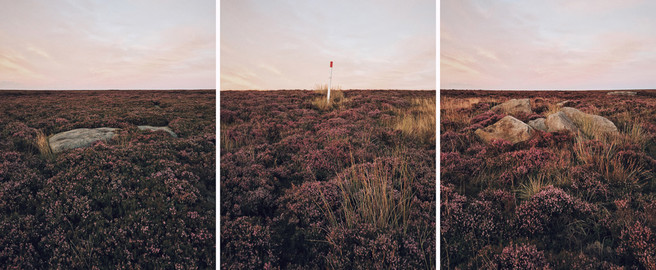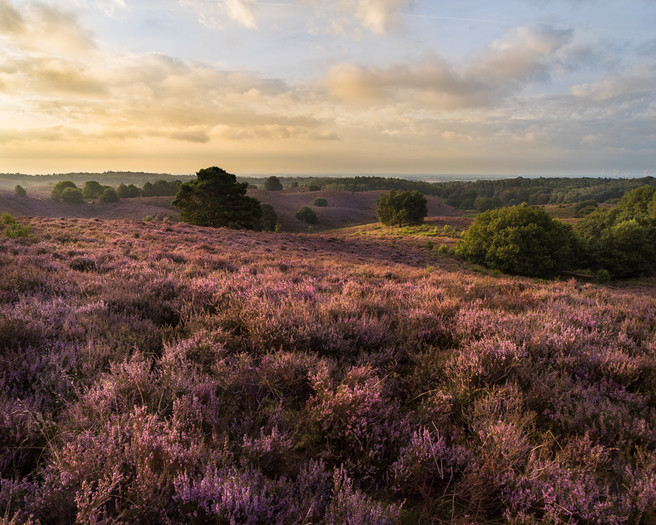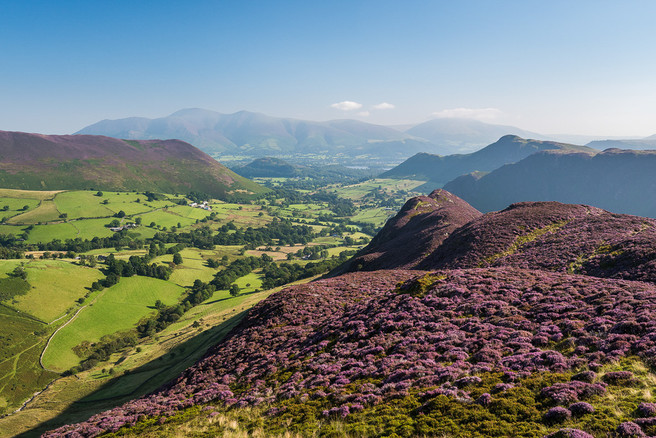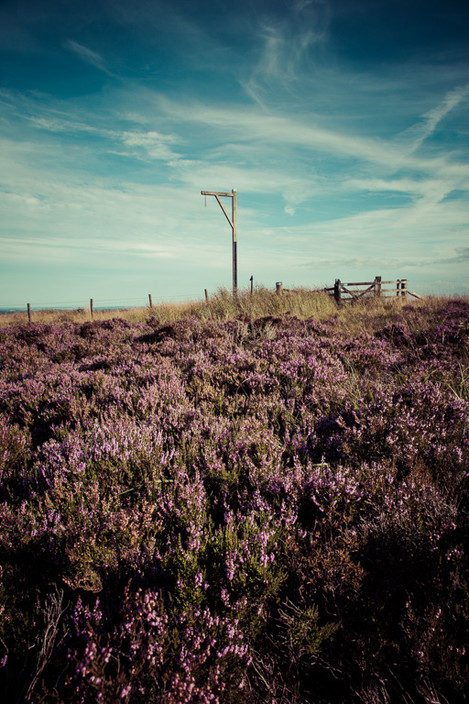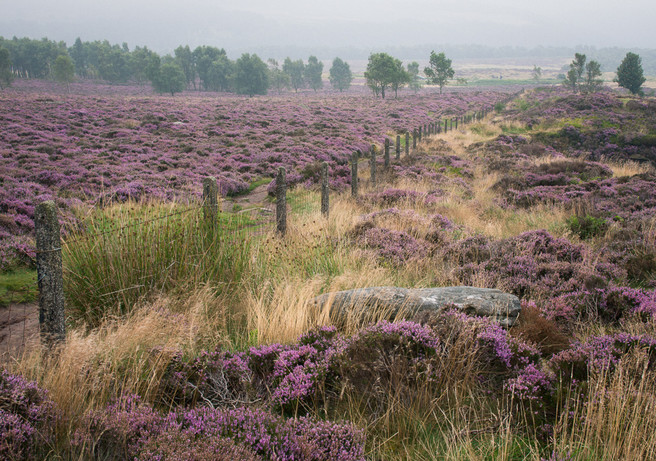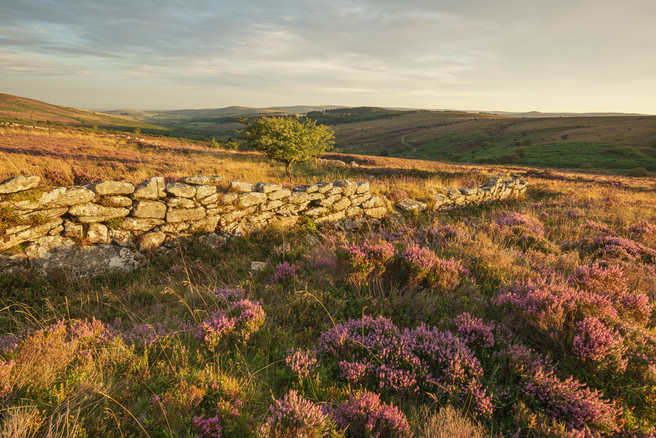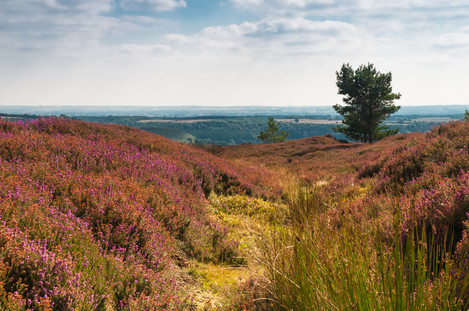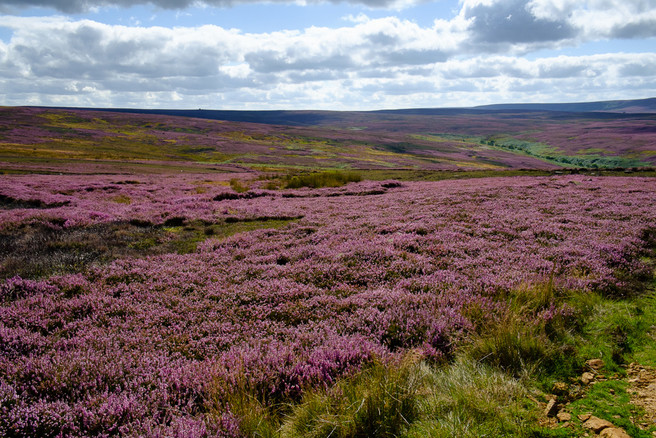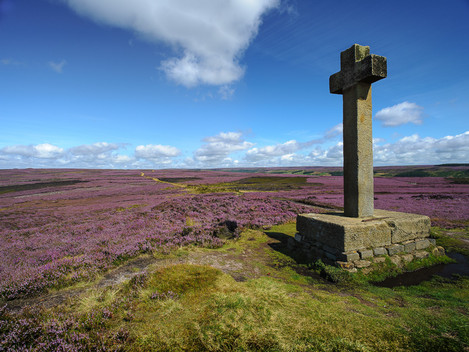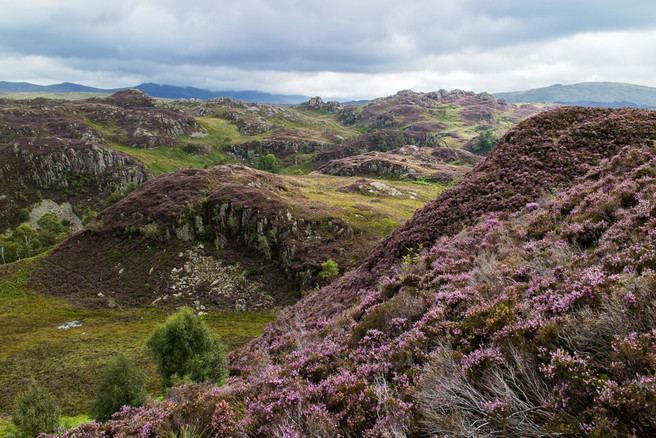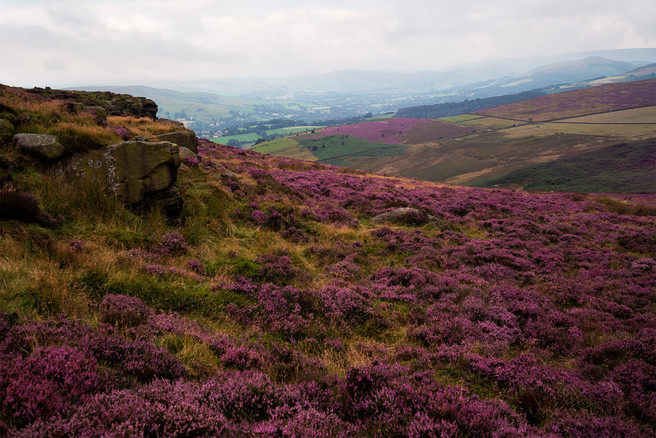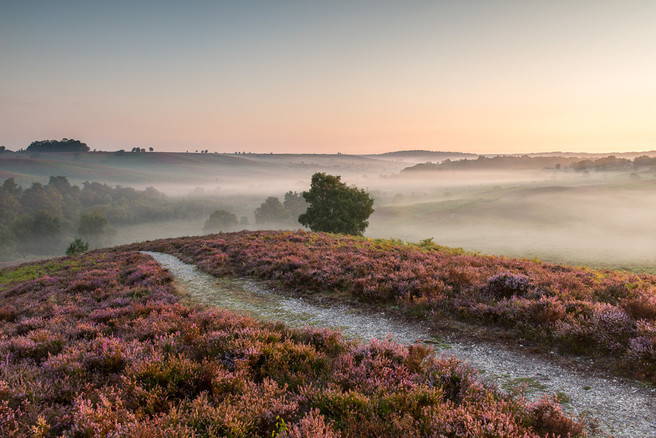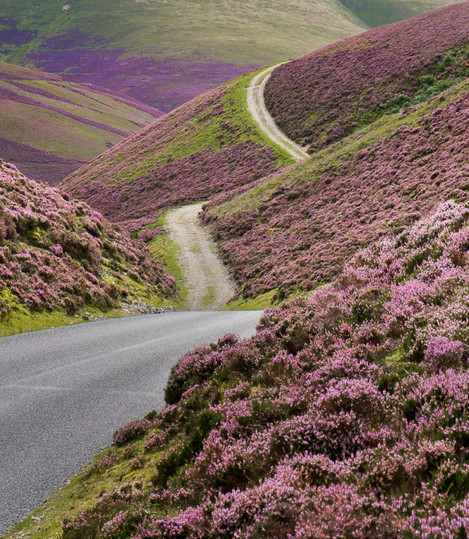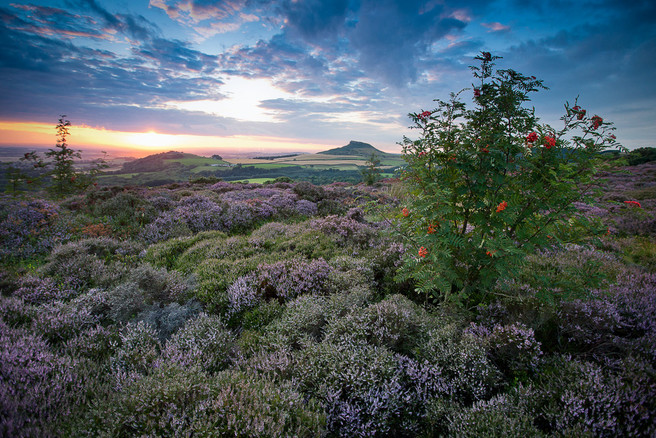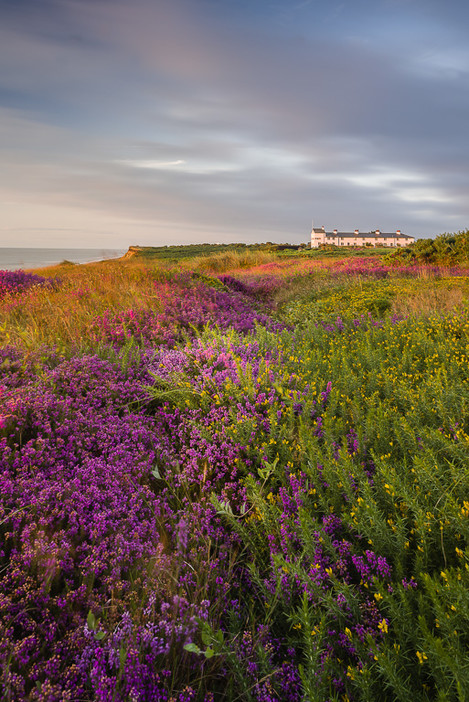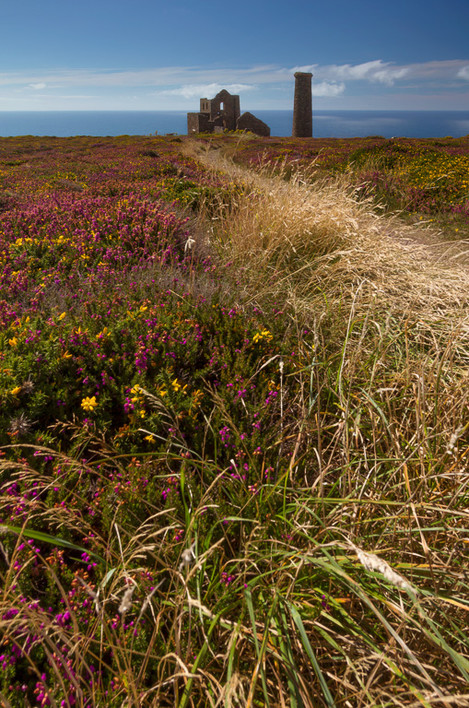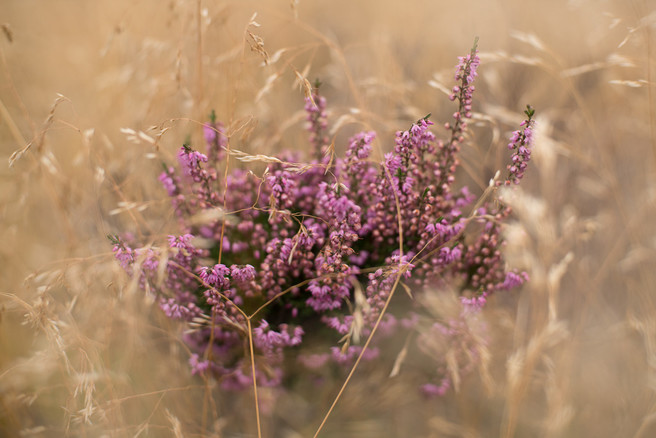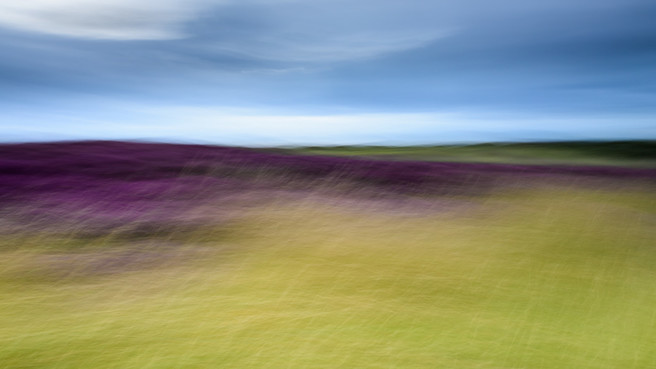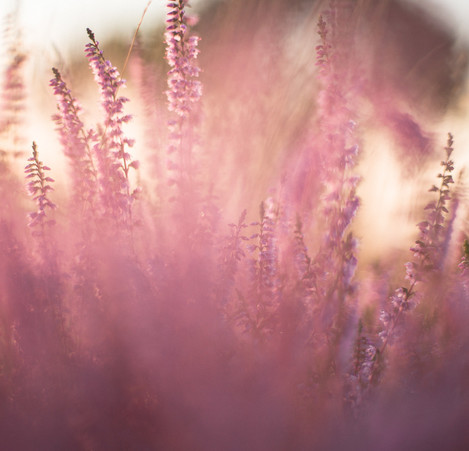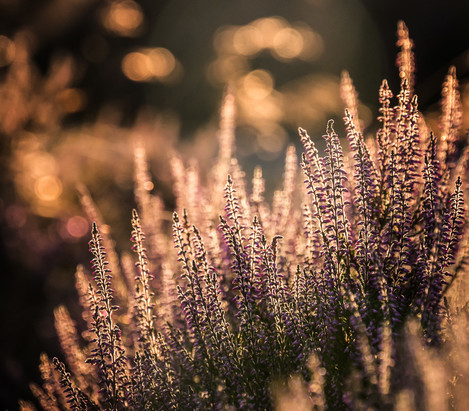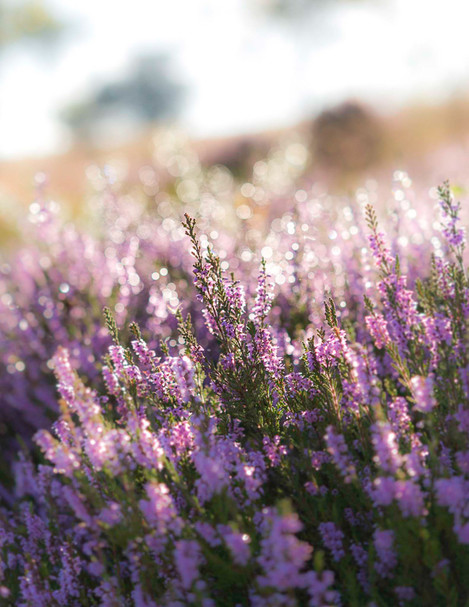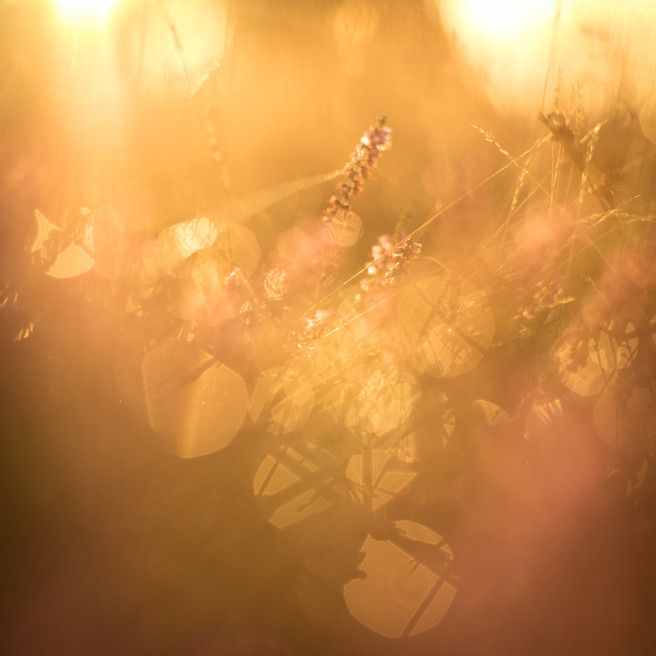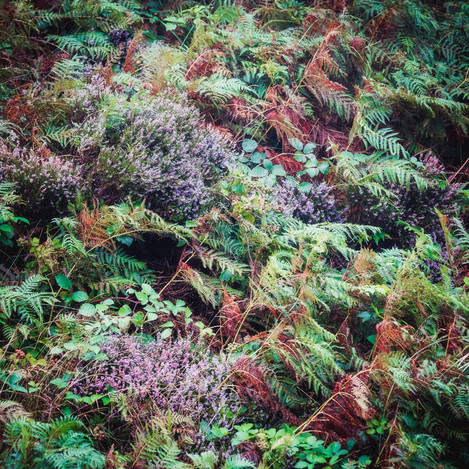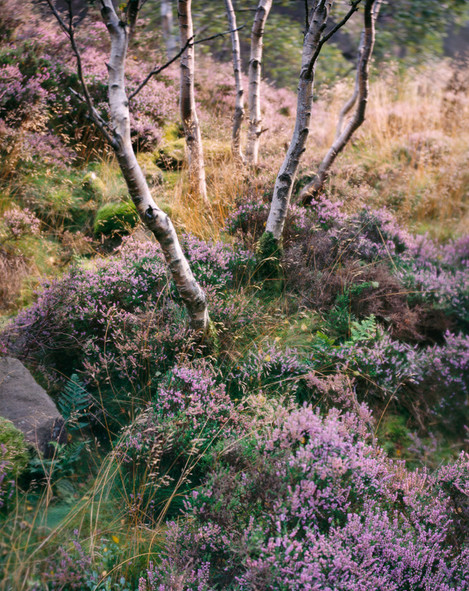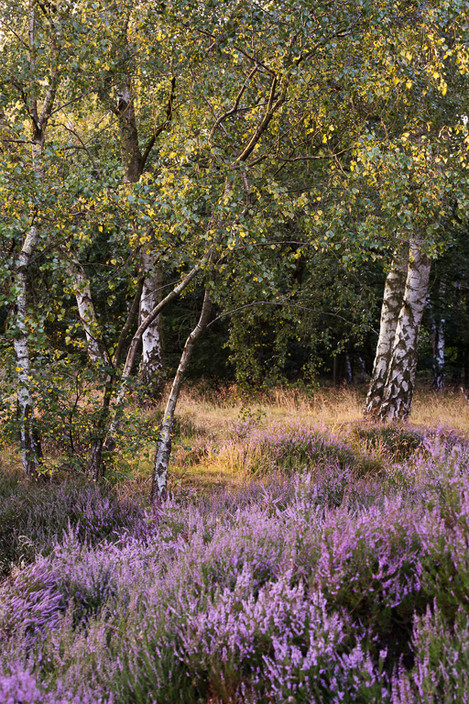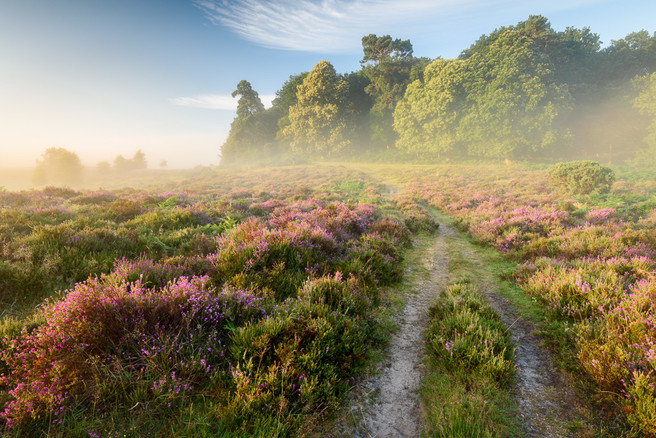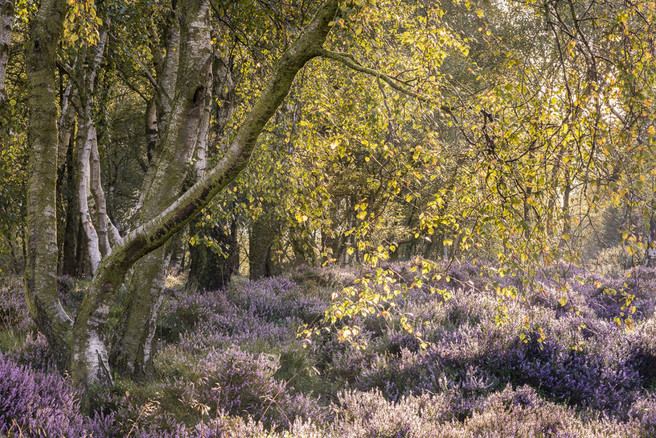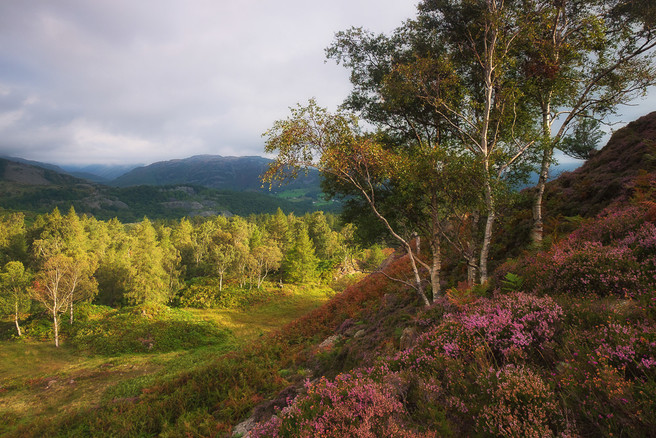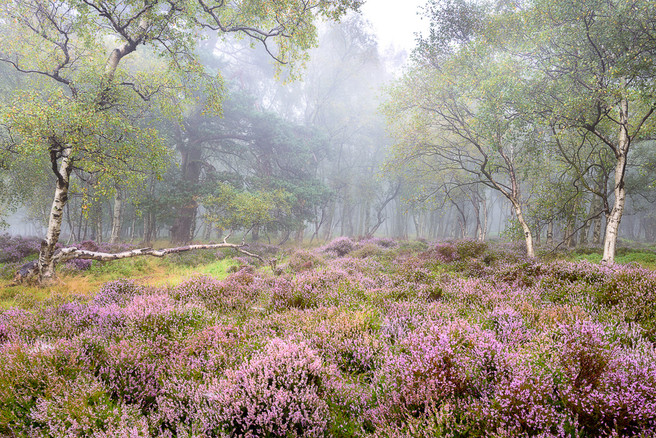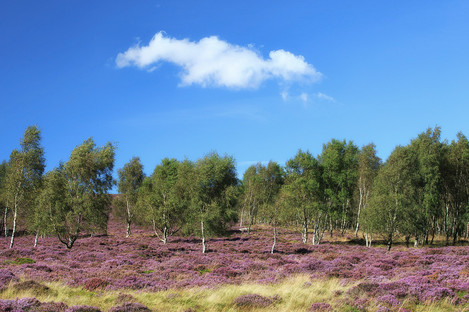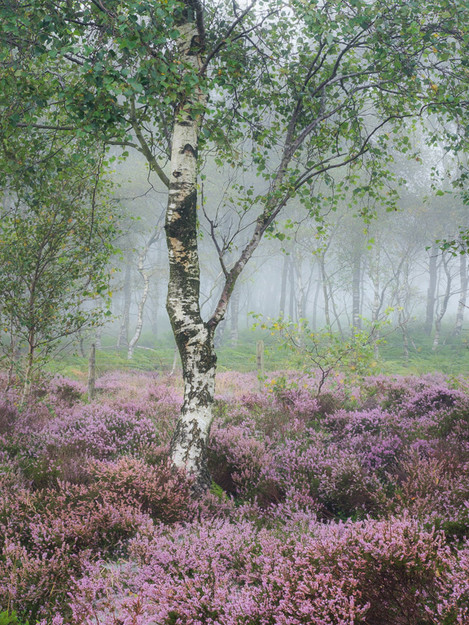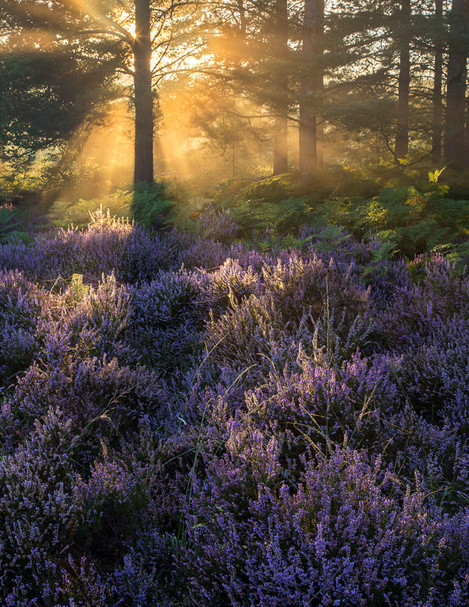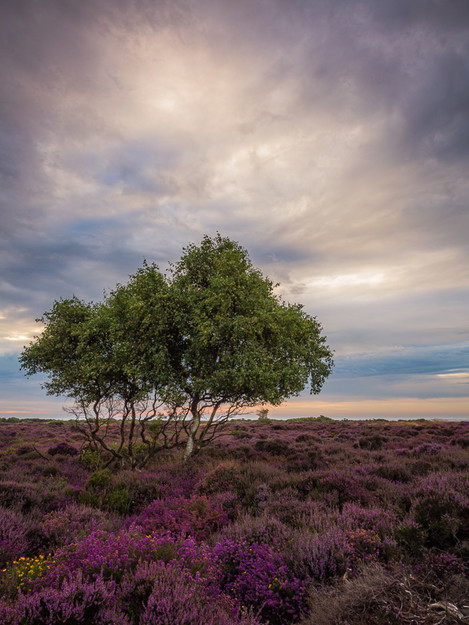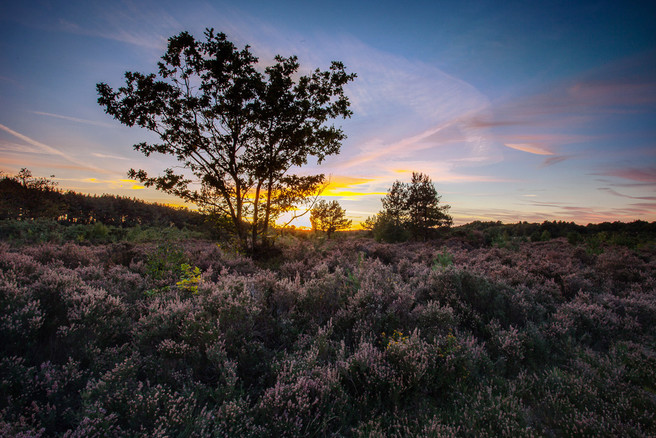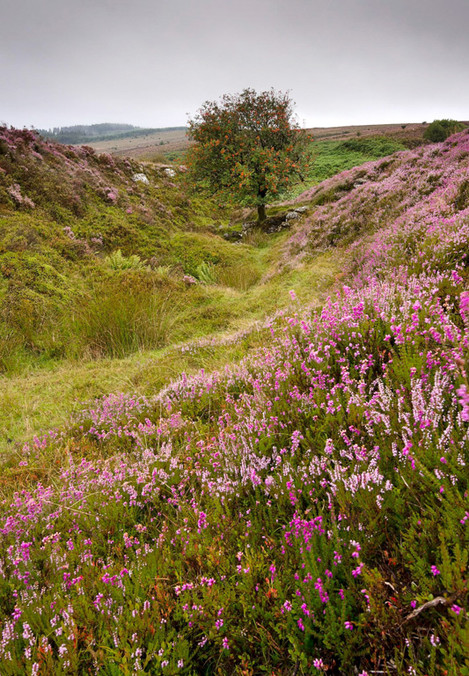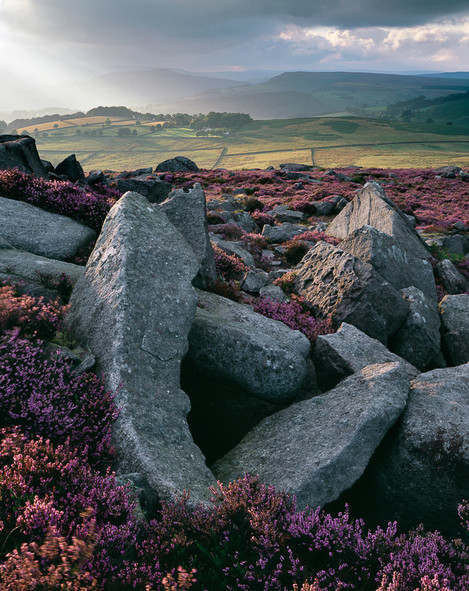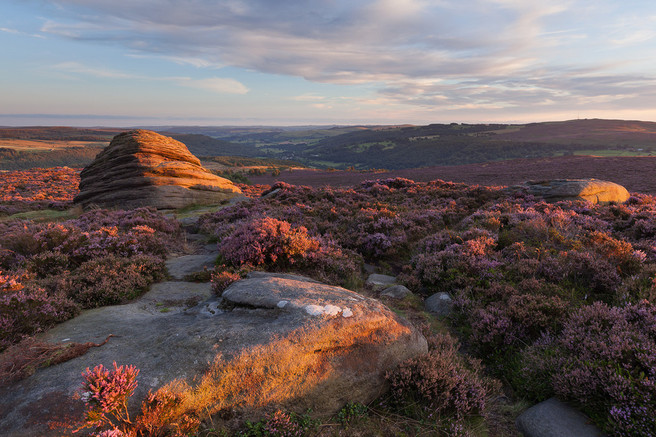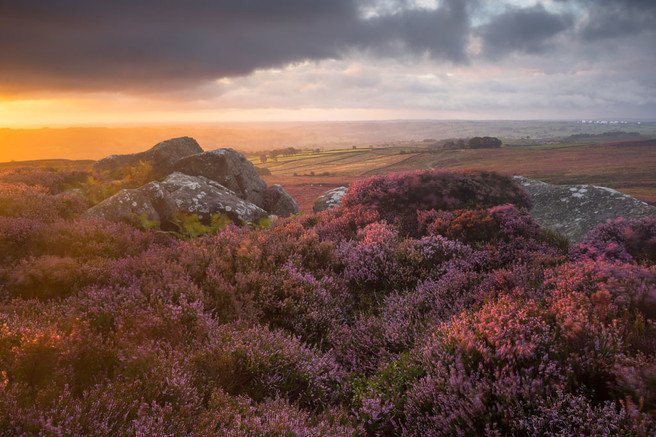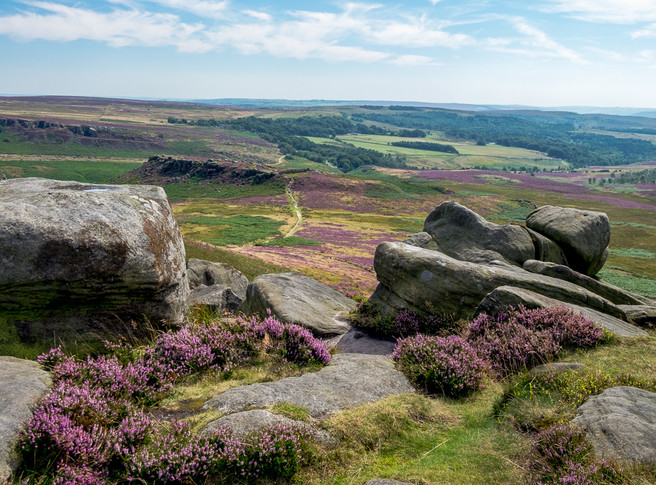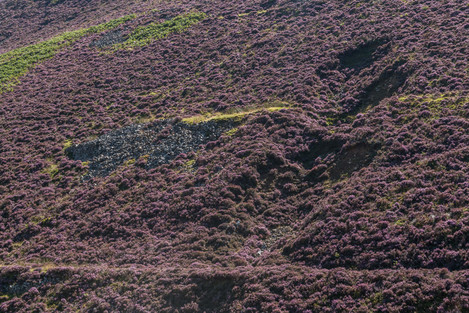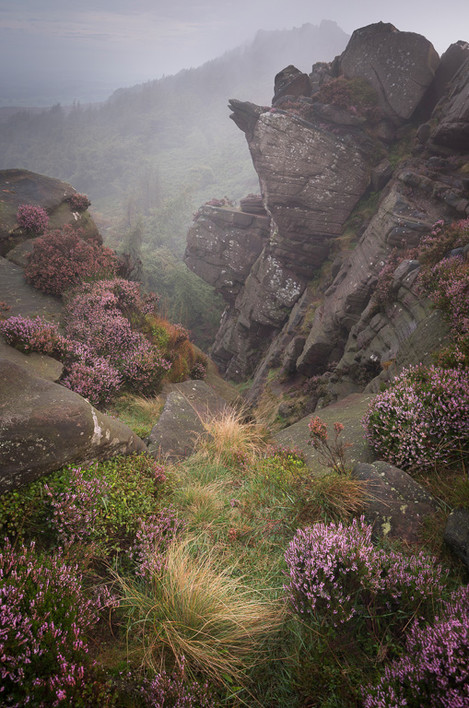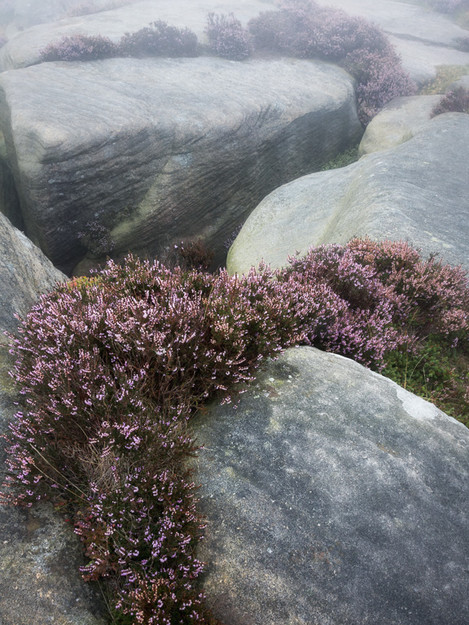Purple Haze all in my Brain

Tim Parkin
Amateur Photographer who plays with big cameras and film when in between digital photographs.
It’s heather season in the Northern hemisphere and those areas blessed with this glorious plant are being presented with one of the wonders of nature. In certain places in the Yorkshire Moors, Peak District and the moors of Scotland there is a swathe of mauve that can extend from horizon to horizon. If you’re driving over the tops of the Yorkshire moors it can seem as if you are afloat on clouds of blossom.
If you live in a moorland area you can sometimes take for granted what an extraordinary view this can create. I remember on one of my first trips to the Peak District with David Clapp and Dav Thomas, we were expecting a write-off as far as photography goes with my usual rain gods in attendance. However, as dedicated as photographers can be we ventured out anyway and as the sun rose, the rain clouds broke and the vista of purple sprang to life. This experience at Higger Tor was one of the most amazing I’ve had. The wet weather somehow amplified the intensity of colour and it was a shock just how vibrant the final picture ended up.
Returning to the Yorkshire Moors a few years later with Joe Cornish we made the most of the elevation from the top of our transport to capture one of the reasons that the tops of the moors make such great driving country.
Let’s back up a bit because when we say heather we’re mostly talking about the most widely distributed type, known as Calluna vulgaris or Common Heather (also colloquially known as Ling Heather from the Scandinavian Lyng (Old Norse) or Liung (Old Swedish)).
Calluna translates as Broom but this was a modern name given to differentiate it from it’s visually similar 'Erica' plant. The place name ‘Lyng’ is also fairly widespread and it is suggested that our Langdales are actually not “Long Valley” but “Heather Valley”.
However, there are two other types of heather that we often see, Bell Heather and Cross Leaved Heath Heather (Erica Cinerea and Erica Tetralix). You’ll see Bell Heather quite often mixed in with Ling Heather and can recognise it by it’s deep, dark purple colour, almost verging on blue in places. Cross Leaved Heath Heather is less often seen, is a paler cousin of Bell Heather and is mostly found in wetter areas and is more commonly known as ‘Bog Heather’. And heather seems to grow anywhere, all thanks to a combination of having waxy evergreen leaves which hold moisture in and protect the plant from dry, salt spray and freezing conditions but also by living in a symbiotic relationship with a fungus which grows around its roots. Mycorrhizal fungi live in the roots of heather, where they exchange sugars that plants produce by photosynthesis for mineral nutrients that fungi absorb from the soil. This gives the humble heather, shunned as vulgar by high society, an ecosystem in common with the exalted Orchid. For some reason, I like this idea of heather being the peasant's orchid.
And for the keen gardener, there are a huge number of different heather types with variations in colour, stature, flower types and even winter flowering varieties.
Medicinal Uses (i.e. Beer)
 In aromatherapy, heather is a bit of a ‘cure all’ but is especially has a calming and settling effect, especially for gastrointestinal problems but also for wounds. More interestingly, heather was also used as an ingredient for ‘gruit’. Gruit is a beer made with herbs instead of hops and interestingly the term ‘ale’ used to mean unhopped beer and so was probably some form of gruit. In 1707 after the battle of Culloden, all things Scottish were frowned upon or banned and that included using anything other than hops as ‘bittering agents’ for beer (a law probably introduced by English hope growers after an easy profit).
In aromatherapy, heather is a bit of a ‘cure all’ but is especially has a calming and settling effect, especially for gastrointestinal problems but also for wounds. More interestingly, heather was also used as an ingredient for ‘gruit’. Gruit is a beer made with herbs instead of hops and interestingly the term ‘ale’ used to mean unhopped beer and so was probably some form of gruit. In 1707 after the battle of Culloden, all things Scottish were frowned upon or banned and that included using anything other than hops as ‘bittering agents’ for beer (a law probably introduced by English hope growers after an easy profit).
If you fancy a taste of the past, Williams Brothers Brewing company are making heather ale again called “Fraoch” (the original name for heather ale) which also uses Bog Myrtle and Meadow Sweet and a very nice flavour it has too!
Heather as Pasturage
In moorland and heathland, heather is also one of the main feed crops for herbivores. Although the main body of the plant is tough and almost impossible to eat, the fresh tips that grow each year are eminently edible and are one of the main foods for deer, grouse, mountain hare, etc. Heather is particularly useful for animals as its tips retain their nutrients through winter and offer a source of food in the coldest of British climates.
Nectar and Pollinators
Heather is also the source of nectar for on of our main pollinators. Bees that frequent heather areas produce a dark, thick set honey that has been tested to have similar anti-bacterial properties to Manuka honey and used for veterinary wound dressing.
Muirburn
In order to promote the growth of new tips, a process called muirburn North of the border or ‘proscribed burning’ in England. Although this way of maintaining the land for livestock farming has a long history, it has been recognised that for some of the good it does for grazing livestock, it has many negative effects on biodiversity and also on drainage and flooding. There are examples of well-managed grouse moorland but over the last couple of decades, there have been increasing reports of mismanagement. The most recent examples are the over burning and drainage of heather moors above Hebden Bridge and the subsequent increase in water run-off and flooding into the town itself. For an example of the extent of burning, compare these two photographs, the first from a sympathetically managed grouse moor in Scotland and the second from the area above Hebden Bridge.
The management of moorland by shooting estates has two sides though. It is undoubted that the landscape would be very different without these estates with much of the moorland reverting to woodland via scrub and birch forest. Many would say this would be a good thing but perhaps there is room for both a rewilding and some ecologically managed moorland.
The Colour of Heather
For all that we describe heather as being purple, there are actually many different shades to be encountered, even within Ling heather. If you wander around you will often see stronger pinky mauve flowers, lilac blue flowers and the occasional deep purples of bell heather.
The lighting conditions give great variety as well. Here's an example of a late evening photograph by Andrew Kearton showing a range from blue-violet in the shade to rich pink where the heather is rim lit by the setting sun.
Generally speaking, direct sunlight on a clear day will suppress the saturation of heather's colour but it will also evenly light the whole landscape; so if you have heather from horizon to horizon it can look very impressive indeed.
The colour of heather typically looks stronger in softer and warm lighting conditions but as Andrew's image above shows, you can play around with mixed lighting at dusk and dawn to really show off the range of colour that heather has to offer.
Don't dismiss heather when it's not in full flower though. The texture of moorland heather can pick up frost beautifully and an early dew with cobwebs strung over a heathland is a sight to behold.
The burnt stubs of heather can work very graphically later in the season against the changing colour of bracken and bilberry.
Photographing Heather
The season for photographing the flowering of heather typically starts at the end of August and although ‘peak colour’ only lasts for a few weeks, there are places to be found with significant heather cover until early October and even patches that last through to December.
When photographing heather you can either choose to show
The abundance of colour through a wide view of the landscape
One of the amazing things about heather is the way it covers a whole landscape. Here are a range of images showing just this
Use the texture and colour of the flowers Close UP
Alternatively, you can get closer to the heather or use its colour in the abstract as part of your picture
Heather and Woodland
Photographing heather on the boundaries or within woodland is particularly satisfying. Early growth birch with its white trunk and speckled green/yellow leaves and mountain rowan’s rich red berries can create great colour contrast.
Even a lone tree or two in a sea of heather makes for interesting
Gritstone and Granite Tors
Many moorland areas also have rocky outcrops (or tors) on them and seeing gritstone or granite raising itself out of a sea of purple can be quite beautiful (and don’t forget to look for millstones and the remains of quarries - e.g. Peak District Edges).
As you read this, the heather season in the UK is just peaking so get out there and show us how you see this floral wonder.
A big thank you for all who contributed images to this article, I'm continually amazed at our subscribers so please visit a few websites and leave a few comments.
Leslie Ash - http://www.lesashephotography.com/
Jason Bascombe - http://www.jasonbascombe.co.uk/
Robert Birkby - http://www.robertbirkbyphotography.co.uk/
Sarah Blandford - http://www.sarahblandfordphotography.co.uk/
Stephen Byard - http://www.stephenbyard.co.uk/
Tristan Campbell - http://www.tristancampbell.co.uk/
Darren Ciolli-Leach - http://darrenciollileach.com/
John Clifton - http://www.pcphotographic.co.uk/
Paula Cooper - http://www.iceniphotography.com
William Dore - http://www.wmdore.com/
David Eberlin - http://davideberlin.uk/
Andrew Entwistle - https://www.facebook.com/andrew.entwistle.35
Elke Epp - https://www.facebook.com/Elke-Epp-Photography-440297832737701
Richard Fox - http://www.richardfoxphotography.com/
Nigel Halliwell - https://www.flickr.com/photos/nigelhalliwell/
Alan Howe - http://devonlandscapephotography.co.uk/
Jason Hudson - https://www.facebook.com/jason.hudson.545
Pete Hyde - http://www.ipernity.com/home/361125
Rich Jones - http://www.richjjones.com/
Andrew Kearton - http://photo4me.com/profile/AndrewKearton#sthash.OULXwppF.dpuf
Andrew Leaney - http://www.abreakintheclouds.co.uk/
Matt Lethbridge - http://www.mattlethbridgelandscapephotographer.co.uk/
Claire McConnell - http://www.greeneyedlens.com/
Stu Meech - http://www.stumeech.co.uk/
Louis Murphy - https://www.flickr.com/people/louismurphy/
Scott Murray - http://www.scottamurray.com/
Paul Newcombe - http://www.paulnewcombephotography.co.uk/
Anita Nicholson - http://www.anitanicholsonphotography.com/
Matthew Nuttall - http://www.mjn-photography.co.uk/
Lee Potter - http://www.mynameislee.com/
Guy Richardson - http://guyrichardson.com/
Paul Richardson - http://www.finchphotography.co.uk/
Mat Robinson - http://www.matrobinsonphoto.co.uk/
Andrew Smith - http://www.lilfordimages.co.uk/
Phil Starkey - http://www.philstarkeyphotography.co.uk/
David Taylor - http://www.davidtaylorphotography.co.uk/
Cat Thompson - http://catthompsonphotography.weebly.com/
David Tolcher - http://www.davidtolcher.co.uk/
Martin Tosh - http://www.photography-by-tosh.com/
Jake Turner - http://www.jrturnerphotography.co.uk/
Bert Vliegen - http://www.bertvliegen.nl/
Damian Ward - http://www.flickr.com/photos/damianward/
Tom White - http://www.tomwhitephotos.co.uk/
Liz Withey - https://www.facebook.com/lwithey1
Stephen Young - https://www.facebook.com/people/Stephen-Young

